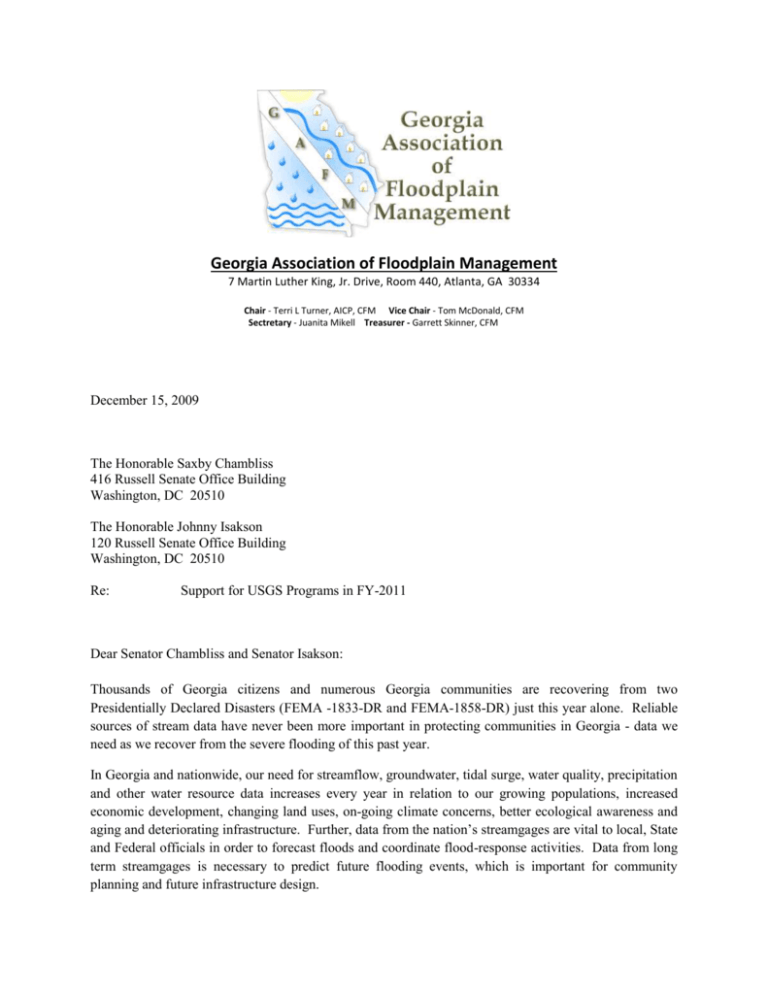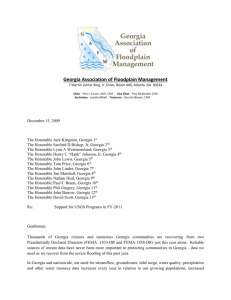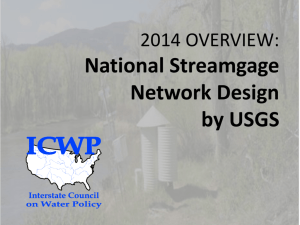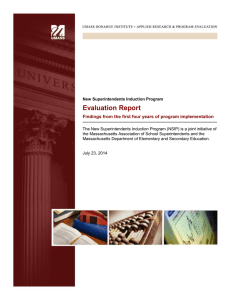Georgia Association of Floodplain Management 7 Martin Luther
advertisement

Georgia Association of Floodplain Management 7 Martin Luther King, Jr. Drive, Room 440, Atlanta, GA 30334 Chair - Terri L Turner, AICP, CFM Vice Chair - Tom McDonald, CFM Sectretary - Juanita Mikell Treasurer - Garrett Skinner, CFM December 15, 2009 The Honorable Saxby Chambliss 416 Russell Senate Office Building Washington, DC 20510 The Honorable Johnny Isakson 120 Russell Senate Office Building Washington, DC 20510 Re: Support for USGS Programs in FY-2011 Dear Senator Chambliss and Senator Isakson: Thousands of Georgia citizens and numerous Georgia communities are recovering from two Presidentially Declared Disasters (FEMA -1833-DR and FEMA-1858-DR) just this year alone. Reliable sources of stream data have never been more important in protecting communities in Georgia - data we need as we recover from the severe flooding of this past year. In Georgia and nationwide, our need for streamflow, groundwater, tidal surge, water quality, precipitation and other water resource data increases every year in relation to our growing populations, increased economic development, changing land uses, on-going climate concerns, better ecological awareness and aging and deteriorating infrastructure. Further, data from the nation’s streamgages are vital to local, State and Federal officials in order to forecast floods and coordinate flood-response activities. Data from long term streamgages is necessary to predict future flooding events, which is important for community planning and future infrastructure design. Numerous agencies and organizations rely heavily on the water data and science that the US Geological Survey’s (USGS’s) National Streamflow Information Program (NSIP) and the Cooperative Water Program (CWP) produce and many are active, cost-share partners (“Cooperators”) in the CWP. Unfortunately, the NSIP and CWP budgets have not kept up with America’s growing needs or the annual cost-share contributions of over 1,500 Cooperators (approximately $163 million). The NSIP and CWP are proven, reliable sources of sound scientific information required by decision makers in both the public and private sectors for a wide variety of analytical, planning, design and management functions. The data and science are used on a regular basis by federal, state, tribal, and local government agencies, and by many businesses, landowners, public interest organizations and individuals for many essential decisions, including: monitoring compliance with federal compact and Native American trust responsibilities; designing bridges, dams and other infrastructure; forecasting storm surge, flood and drought conditions and issuing emergency advisories; identifying flood-prone areas to protect lives and property and reduce disaster relief expenses; administration of water rights; managing reservoir releases for hydropower, environmental and navigation uses; monitoring and protecting water quality, fisheries, wetlands and endangered species; providing for safe public recreation; analyzing climate change and evaluating response options; and projecting future water needs and availability for agricultural, municipal and industrial uses. The NSIP, proposed by Congress in 1999, was intended to provide multipurpose, unbiased surface-water information and to operate as a national “backbone,” supporting a streamgaging framework of approximately 4,780 federally funded streamgages and tidal gages necessary to fulfill the nation’s needs for streamflow measurement, analysis and information delivery. In Georgia, there will be 84 of these planned federally-funded streamgages. Yet, to date, more than 425 have not been installed, more than 970 need to be reactivated and more than 2,700 active NSIP streamgages are funded (wholly or partially) by the CWP cost-share partners. Furthermore, most of those streamgages still need to be “flood hardened” and updated for real-time communications in order to provide reliable and timely flood forecast information. While the CWP has served America well for over 110 years, USGS is now able to support less than 1/3 of its cost. In 2008, USGS operated a network of about 7,663 active streamgages nationwide, but more than 965 have been “discontinued” since 2001 due to inadequate funding. Many of those had over 50 years of continuous record, which gives their loss much greater significance. Another 277 streamgages in 31 states are currently identified as being at risk or have already been recently discontinued. As of 2007, the USGS was operating 197 continuous-record streamgages in Georgia, of which 53 were selected to be part of the NSIP federal-goal streamgage network. Based on research, 8 of the 53 streamgages are fully funded by the NSIP and 45 are funded through the CWP. It is my understanding that if NSIP were fully funded in Georgia, all 53 of the streamgages would be completely federally funded. The remaining 144 streamgages would remain funded through the CWP, with the cost of operation being about 40% less than current costs, since the NSIP would cover all of the infrastructure costs – costs such as management and supervision of the GA streamgage network, maintenance and updates to the streamgage database and administrative support of the program. The savings could exceed 1 million dollars in Georgia alone. The Georgia Association of Floodplain Management (GAFM) urges your support to enable the U.S. Geological Survey (USGS) to fully implement the NSIP plan as soon as possible and we urge you to support Congressional efforts to appropriate $110 million in FY-2011 for that purpose. Full implementation of the NSIP would help reverse the loss of long-term streamgages and provide essential information needed to assess water quality and climate change, forecast floods (including storm surge) and droughts and provide emergency warnings, manage interstate water supplies and monitor compliance with federal treaty, compact and Native American trust responsibilities. By itself, however, the NSIP cannot meet our national need for the data and science required to manage water resources in a sustainable manner and federal funding for the USGS share of the CWP data collection and investigations of at least $95 million will be necessary. Re-balancing the CWP cost-share to the long-standing tradition of a 50:50 partnership is especially important now, as state, tribal and local agencies confront recession-driven fiscal challenges. These measures would represent a very reasonable investment, considering the magnitude of our ongoing disaster emergency expenses and the federal responsibilities and programs that depend on information from the NSIP streamgages. If I can provide additional information, please contact feel free to contact me at gafm.chair@gafloods.org, or contact Larry Larson, Executive Director of the Association of State Floodplain Managers (ASFPM), at larry@floods.org or contact Peter Evans at the Interstate Council on Water Policy at phe@riverswork.com. Sincerely, Terri L Turner, AICP, CFM GAFM Chair









